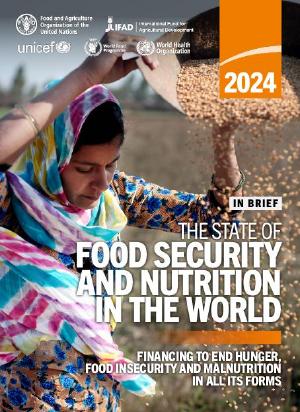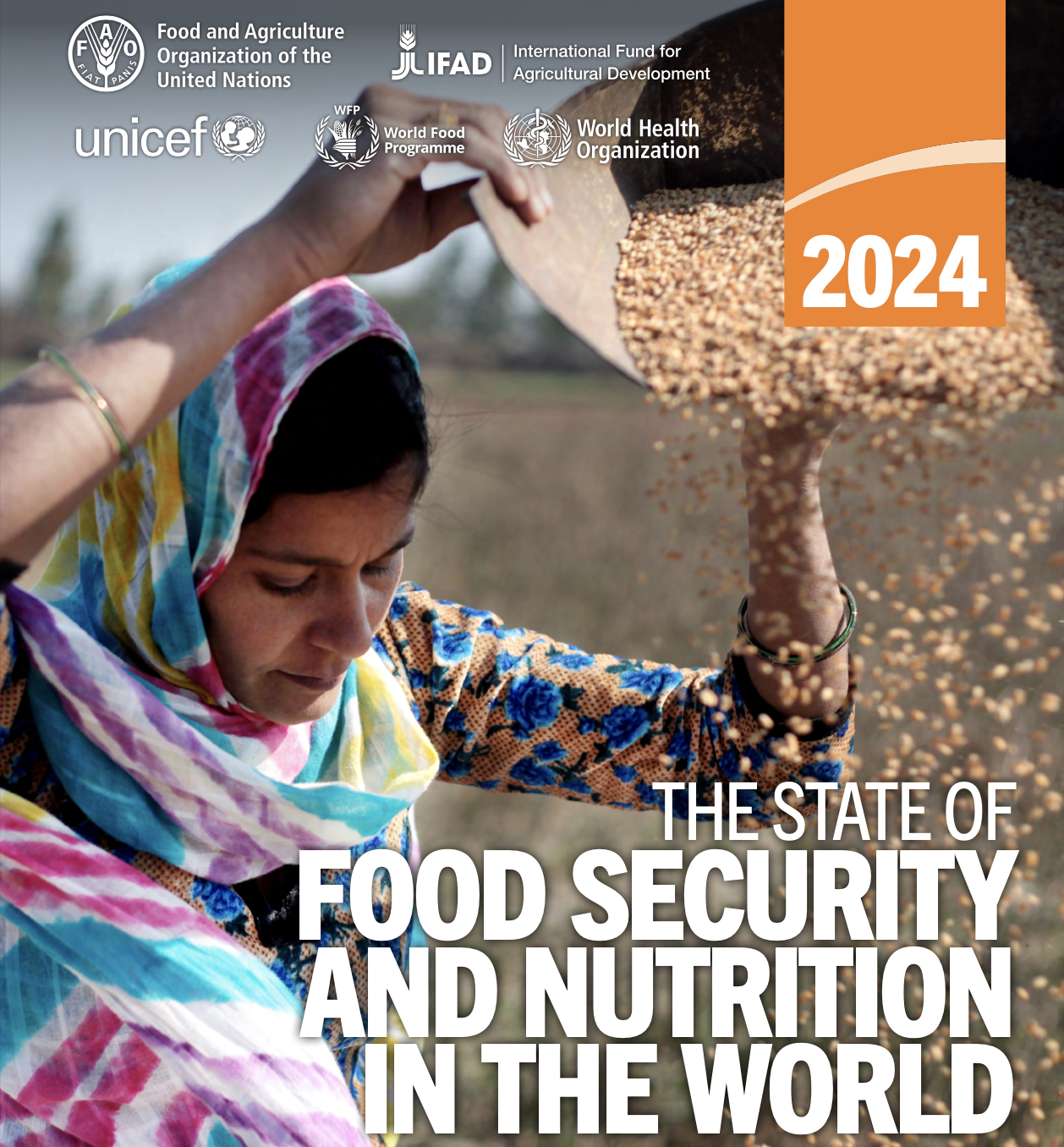Achieving the Sustainable Development Goals (SDGs) is a global responsibility. With only six years left, the world is far off track to achieve SDG2–the goal to end hunger and all forms of malnutrition. While there has been progress in some regions, progress remains inadequate and uneven.
Between 713 and 757 million people faced hunger in 2023 – one out of 11 people in the world, and one out of every five in Africa. Of these, women, youth, and Indigenous Peoples suffer disproportionately. Without change, 582 million people will face hunger and malnutrition by 2030, missing global nutrition targets on SDG2. An estimated 28.9 percent of the global population – 2.33 billion people – were moderately or severely food insecure.
Co-authored by the five UN Agencies WHO, FAO, WFP, IFAD and UNICEF, this year’s State of Food Security and Nutrition in the World (SOFI) report identifies conflict, climate change, economic shifts, poor diets, and inequality as drivers of global food insecurity.
The report focuses on finance, a vital SDG implementation tool, as a critical barrier towards ending hunger. Many low- and middle-income countries face significant constraints in accessing the financing needed to protect food security and nutrition.
The report provides a new definition and cost estimates for financing to end hunger and ensure all people have access to safe, nutritious and sufficient food (SDG Target 2.1), and to end all forms of malnutrition (SDG Target 2.2) to better measure and track investments in food security and nutrition. It calls for greater coordination among actors and harmonized data collection.
More and better financing is needed urgently to accelerate progress towards SDG2. Incurring this cost now is not only an investment in the future; it is our obligation. The cost of inaction is much higher, estimated in the trillions of dollars.







